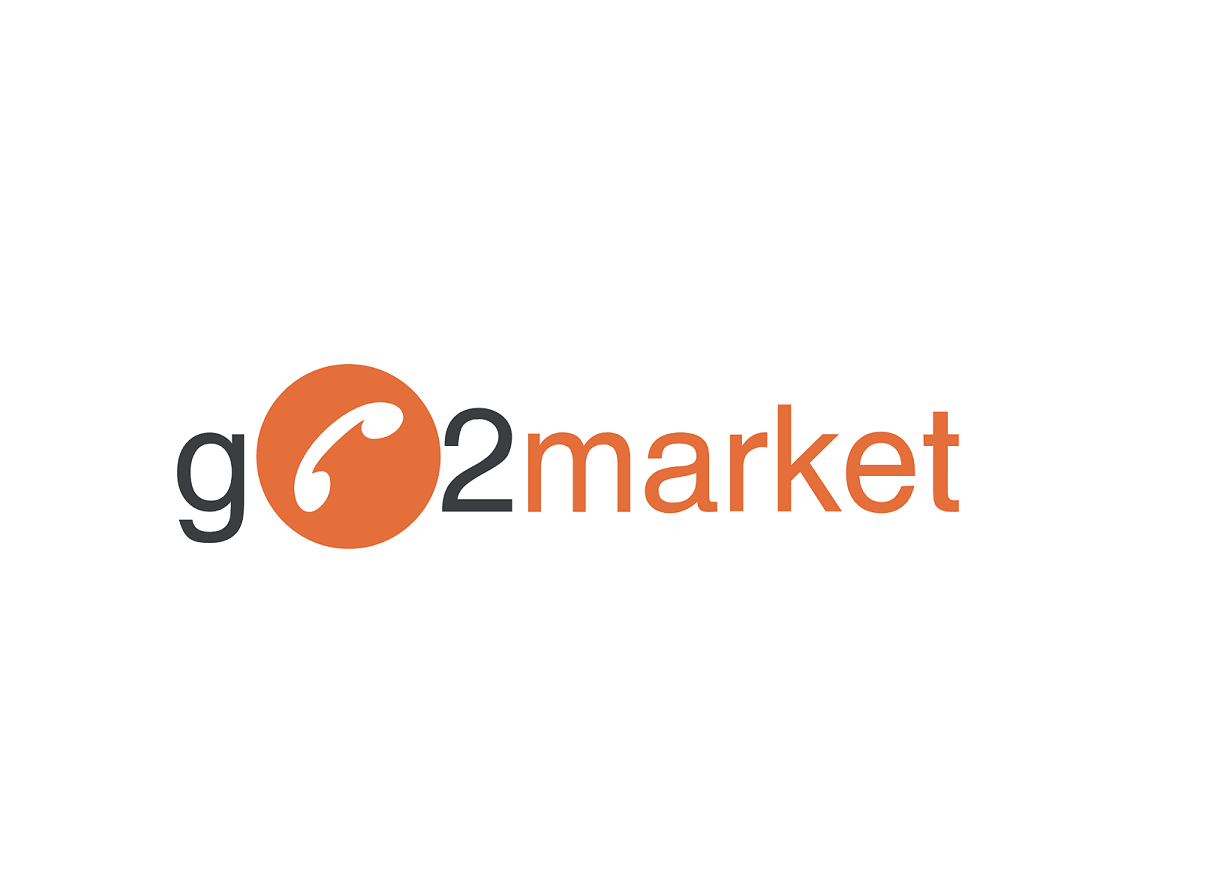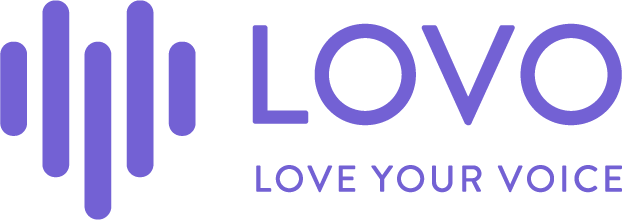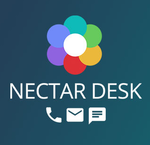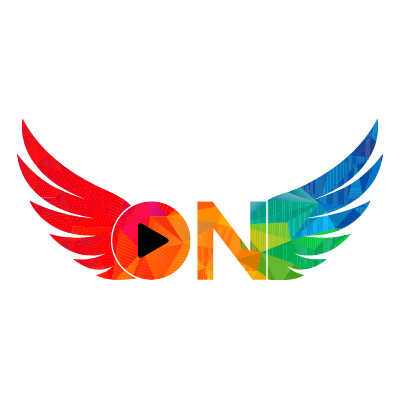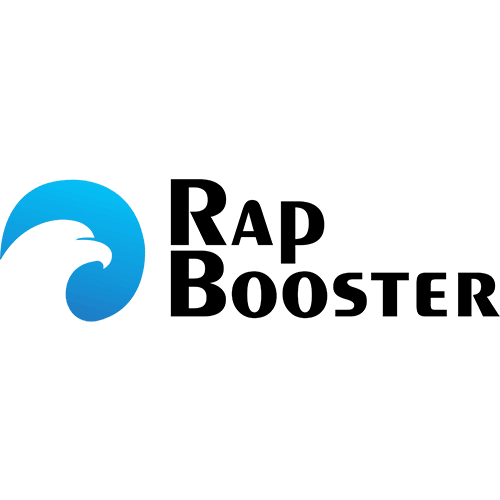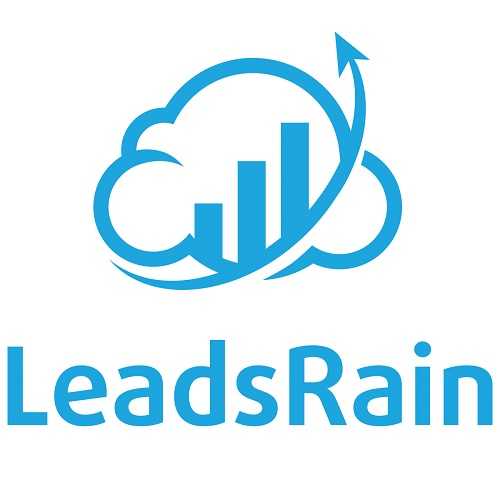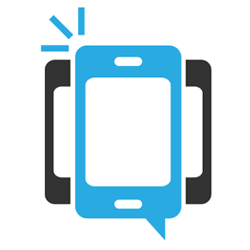Yes, most voice broadcasting software can be accessible from numerous devices and platforms, making it easy for users to manage their campaigns on the go. This means you can use it on your desktop, laptop, tablet, or mobile phone, whether you're running Windows, Mac, iOS, or Android. This flexibility enables firms to reach a larger audience and ensure that campaigns run successfully from any place.
List of 20 Best Voice Broadcasting Software
Go2Market Voice Broadcasting - the perfect tool for connecting with your audience using authentic voice messages. Our advanced platform enables you to effortlessly send pre-recorded messages to a wide audience, increasing your reach and creating a mo...Read More Go2Market Voice Broadcasting
LOVO Studio is a text-to-speech and voiceover software. With a wide range of options including 34 languages and 160+ human-like voices, LOVO Studio takes your audio content to new heights. Personalize your brands voice with our one-of-a-kind clone fe...Read More LOVO Studio
InterCloud9 is a highly regarded software solution known for its outstanding performance in a variety of applications. Its impressive capabilities and seamless integration provide users with a reliable and secure platform for their business operation...Read More InterCloud9
AsteriskService is a dependable session board controller that offers a comprehensive suite of tools for streamlined and secure VoIP operations. Its array of features includes NAT Traversal, call admission control, and media bridging, ensuring advance...Read More AsteriskService
DialerAI is a call center solution that offers multi-tenant capabilities and integrated billing for tenants. Effortlessly manage Predictive and Auto-Dialing, send SMS messages, conduct voice call broadcasts, and handle inbound calls. Take your busine...Read More DialerAI
Nectar Desk, call center software designed to enhance customer interactions, maximize agent productivity, and offer in-depth insights with its user-friendly reporting. Seamlessly integrating with multiple channels and equipped with real-time analytic...Read More Nectar Desk
OnTheFly.Stream solution for seamless live streaming. Say farewell to the tedious task of setting up streams on multiple platforms. Our revolutionary software simplifies your content strategy and expands your audience reach. With OnTheFly, going live...Read More OnTheFly.Stream
CallMultiplier is a auto dialer solution to simplify your calling endeavors. With the ability to connect with thousands of contacts simultaneously, it allows you to effortlessly reach your targeted audience. This frees up your resources to concentrat...Read More CallMultiplier
ICTBroadcast is a auto dialing solution for enhancing communication efficiency. With its cutting-edge features, you can seamlessly handle multiple calls, send pre-recorded messages, templated emails, and transfer calls to operators using DTMF keys. S...Read More ICTBroadcast
Sarv is a email marketing software that allows users to effortlessly design and send custom campaigns. With its cutting-edge functionalities such as automation, intuitive editor, split testing, and detailed analytics, Sarv empowers businesses to effe...Read More Sarv
Newfies-Dialer is a call center solution equipped with multi-tenant functionality and integrated billing for seamless management of all your tenants. This robust software offers a variety of features such as Predictive Dialing, Auto-Dialing, SMS deli...Read More Newfies-Dialer
Ecosmobs Voice & SMS Broadcasting - and versatile multi-tenant software tailored for businesses of all sizes. This cutting-edge solution automates voice broadcasting, ensuring efficient and effective communication for your enterprise. From small vent...Read More Ecosmob Voice & SMS Broadcasting
Amyntas is a bulk SMS service solution that offers various connectivity choices and customizable features. With options such as HTTP, API, XML, and SMPP, you can easily send messages domestically or globally with a 100% delivery guarantee. Our integr...Read More Amyntas
RapBooster Advance – solution for businesses to optimize their WhatsApp marketing initiatives. Featuring robust automation capabilities, effortless customer list management, and comprehensive engagement monitoring, RapBooster Advance streamlin...Read More RapBooster Advance
Datagen Enterprise Platform is a choice for messaging, voice broadcasting, and WhatsApp business API. Our platform boasts advanced features and a seamless user interface, powered by robust technology and strong partnerships with global carriers. Coun...Read More Datagen
CallFire is a highly acclaimed call and text platform that enhances customer outreach and increases sales for businesses of all industries. With a reputation for effectiveness and dependability, this award-winning software is the go-to choice for red...Read More CallFire
Dialer360 is a Cloud-based call center solution that elevates your calling capabilities. Our suite of features, including Predictive dialer and SMS & Voice broadcasting, caters to all your communication needs with efficiency. With round-the-clock sup...Read More Dialer360
Elisiontec – is a call center software that simplifies your operations and enhances efficiency. With seamless integration of CRM, sales, and front desk processes, Elisiontec streamlines your workflow and maximizes productivity. Say goodbye to...Read More Elisiontec
Leadsrain solution for small and mid-sized call centers. Our cloud-based predictive dialer is a game-changer when it comes to boosting agent performance and productivity. Say goodbye to expensive equipment and maintenance costs with our hosted dialer...Read More Leadsrain
Dial My Calls is a platform for sending out SMS or voice broadcasts for a variety of purposes, from general messaging to urgent notifications. Our user-friendly system ensures quick and efficient communication with your audience. Whether its for ever...Read More Dial My Calls
Learn More About Voice Broadcasting Software
- What Is Voice Broadcasting Software?
- What Are The Recent Trends In Voice Broadcasting Software?
- Benefits Of Using Voice Broadcasting Software
- Important Factors To Consider While Purchasing Voice Broadcasting Software?
- What Are The Key Features To Look For In Voice Broadcasting Software?
- Why Do Businesses Need Voice Broadcasting Software?
- How Much Time Is Required To Implement Voice Broadcasting Software?
- What Is The Level Of Customization Available In Voice Broadcasting Software?
- Which Industries Can Benefit The Most From Voice Broadcasting Software?
- Conclusion
What Is Voice Broadcasting Software?
Voice broadcasting software is a strong tool used by organizations of all kinds to connect effectively with their customers and prospects. This software automates the process of delivering pre-recorded voice messages to a large number of contacts via phone calls. It eliminates the need for manual calling, making it an excellent communication tool for mass outreach.
One of the most important advantages of voice broadcasting software is the ability to create personalized messages and schedule them to be sent at certain times. This enables organizations to contact their clients at the most convenient and relevant moment, improving the likelihood of engagement and response rates. In addition to voice messaging, this software offers real-time reporting and analytics, providing organizations with vital insights into the performance of their initiatives.
This information can help them make better decisions about future marketing initiatives. Voice broadcasting software is not confined to telephone calls. It also offers text-to-speech conversion, so organizations may send automated messages to landlines, cell phones, and even voicemail. This ensures that the message gets to the intended recipient, regardless of their preferred form of contact.
Furthermore, this software is highly customizable, allowing firms to segment their audience and personalize messaging to certain groups. This tailored strategy can lead to better results and increased client satisfaction. When choosing speech broadcasting software for your business, you should analyze its features, pricing, and customer support options. With the correct software, your company can communicate with your target audience in an efficient and effective manner, saving time and resources while improving reach and engagement.
What Are The Recent Trends In Voice Broadcasting Software?
Voice broadcasting software has grown in popularity in recent years as a means for businesses and organisations of all kinds to quickly and efficiently reach a big audience. These software solutions broadcast pre-recorded messages to a specific list of phone numbers, allowing businesses to provide critical information, promotions, and updates to their consumers and contacts.
Some of the major trends in voice broadcasting software are:
1. Advanced Automation And Personalisation Features: As technology advances, speech broadcasting software evolves to provide greater automation possibilities. This includes features like speech recognition, which enables businesses to personalise messages depending on the recipient's name, location, and other pertinent data. This creates a more personalised and interesting experience for the recipients, resulting in increased response rates.
2. Interaction With CRM And Other Marketing Tools: Many software solutions now provide seamless interaction with CRM systems and other marketing tools, which improves the success of voice broadcasting campaigns. This enables firms to target specific audience segments, monitor campaign results, and analyse customer data to better future campaigns. It also reduces the need for manual data entry, resulting in a more organised and effective marketing plan.
3. Multi-Channel Delivery: Although voice broadcasting was once confined to phone calls, many software solutions now include multi-channel delivery choices. This involves sending pre-recorded messages by SMS, email, and social media platforms such as WhatsApp and Facebook Messenger. This enables firms to reach a larger audience and respond to the needs of various sectors.
4. Interactive Voice Response (IVR) Capabilities: IVR is a technology that enables users to engage with a computerised system using voice or phone keypads. Voice broadcasting software with IVR features can be used to perform surveys, collect consumer feedback, and even direct calls to the right department based on the recipient's response. This not only helps to collect useful data, but it also improves the overall consumer experience.
5. Cloud-Based Solutions: With the growing popularity of the cloud, many voice broadcasting software solutions are now available as cloud-based platforms. This reduces the need for organisations to invest in hardware and infrastructure, making it a more cost-effective solution. It also supports remote access, which makes it easier for organizations to administer and monitor campaigns from anywhere.
Benefits Of Using Voice Broadcasting Software
Voice broadcasting software allows enterprises to reach a big audience efficiently and affordably by using pre-recorded voice messages. With technological advancements and the increased use of mobile phones, speech broadcasting has become a popular marketing and communication strategy.
We'll look at the advantages of using voice broadcasting software for your business.
1. Reach A Large Audience Quickly And Easily: One of the primary advantages of using voice broadcasting software is the opportunity to reach a huge audience with a few clicks. Reaching a big number of individuals using traditional communication means might take time and money. However, audio broadcasting allows you to successfully convey your message to thousands of recipients in minutes, saving your company important time and resources.
2. Personalised Communication: Voice broadcasting software enables you to record a personalised message that may be tailored to various groups of recipients. You can increase the engagement and effectiveness of your communication by addressing your audience by name and personalising the message to their demographics or interests. This kind of personalised connection can help your brand stand out in a competitive market and leave a lasting impact on your target audience.
3. Cost-Effective Marketing Tool: Voice broadcasting software is an affordable marketing strategy that can yield substantial effects for your company. Voice broadcasting, unlike traditional advertising tactics such as television or radio ads, has no media purchase or production fees. Furthermore, because of its ability to reach a big number of people at once, you can drastically cut your marketing costs while increasing your ROI.
4. Automation And Time Savings: Another benefit of employing voice broadcasting software is its automated capability. This implies that once you've created your campaign and chosen your audience, the program will automatically convey your message without the need for human participation. This saves time and resources for your firm, allowing you to focus on more important activities.
5. Real-Time Feedback And Reporting: Most speech broadcasting software has a reporting feature that allows you to monitor the progress of your campaign in real time. To assess the success of your messaging, keep track of the number of calls made, responses received, and other key indicators. This information can help you improve your marketing efforts and make better decisions for future campaigns.
Important Factors To Consider While Purchasing Voice Broadcasting Software?
When it comes to choosing speech broadcasting software, there are several important elements to consider before making a purchase.
From features to pricing, here are the crucial factors to consider when looking for the proper audio broadcasting software:
1. Target Audience: Before making any purchase, you should understand who your target audience is and what their tastes are. This will assist you understand what features and characteristics to search for in voice broadcasting software.
2. Broadcasting Channels: Voice broadcasting software can reach your target audience through a variety of channels, including landlines, cell phones, and VoIP systems. Make sure the software you select supports the channels that are most important to your target audience.
3. Scalability: As your firm expands, you will require a wider audience reach. Consider the software's scalability to guarantee that it can accept future growth.
4. User-Friendly Interface: Look for software with a simple interface that allows you to quickly navigate through the many functions and settings. This will save you time and frustration while creating and administering voice broadcasting programs.
5. Automation Features: The ability to automate processes like scheduling, list maintenance, and message customisation will help you save time and money in the long term. Look for software that includes powerful automation options to help you streamline your marketing.
6. Personalisation Options: Personalised messages are more effective in engaging and converting clients. Look for software that allows you to include personalised components like names, localities, and other pertinent information in your voice messages.
7. Analytics And Reporting: A decent voice broadcasting software should have extensive analytics and reporting to assist you track the effectiveness of each campaign. This data can help you make more educated decisions and improve future campaigns.
8. Integration Options: Determine whether the program can be integrated with your existing CRM or other systems for handling customer data. This will enable a more seamless and efficient workflow.
9. Pricing: Voice broadcasting software prices vary widely, with some offering pay-per-use alternatives and others asking a monthly subscription cost. Consider your budget and the features you need to locate the program that provides the most value for money.
10. Customer Support: Finally, make sure to select a software provider that provides dependable customer support in the event that you face any problems or require assistance with the software. Look for options like phone support, live chat, and a knowledge base to guarantee you can get help when you need it.
What Are The Key Features To Look For In Voice Broadcasting Software?
When shopping for voice broadcasting software, you should consider a few crucial aspects to help you make an informed purchase. These capabilities can help you streamline and boost the efficiency of your business communications, allowing you to achieve your intended results.
Whether you run a little business or a large enterprise, examining five critical features will help you select the best voice broadcasting software for your needs.
1. Call Routing And Scheduling: Call routing and scheduling are key functions of voice broadcasting software. This enables you to properly manage and distribute incoming and outgoing calls according to your unique criteria. Call routing and scheduling, whether based on time of day, geography, or caller preferences, can help you optimize interactions and provide better customer service.
2. Personalization Options: Another key aspect to consider is the option to personalize your voice broadcasts. This helps you to personalize your messaging for specific audiences, boosting the likelihood of interaction and response. Look for software that allows you to customize greetings, caller ID, and recipient information to make your voice broadcasts more real and personalized.
3. Detailed Analytics: A decent speech broadcasting software should include sophisticated analytic tools that allow you to track and assess the effectiveness of your campaigns. This contains data like call completion, response, and conversion. Having access to these insights will allow you to make data-driven decisions for future campaigns.
4. Multiple-Channel Support: In today's fast-paced business world, it is critical to be able to contact your target audience via many channels. Look for voice broadcasting software that also accepts SMS, email, and social network messages. This enables you to reach a larger audience and interact with customers on their chosen platforms.
5. Easy Integration: Another important element to consider is the software's ability to integrate with your current CRM or customer database. This saves time and effort by automating the process of importing and updating client data. It also enables improved targeting and personalization of your voice broadcasts.
6. Reliable Customer Support: When investing in software, it is critical to have access to dependable customer assistance in the event of any technical issues or enquiries. Make careful to investigate the firm and read reviews to ensure that their customer service crew is attentive and knowledgeable.
Why Do Businesses Need Voice Broadcasting Software?
Businesses require speech broadcasting software primarily because of its ability to reach a big audience fast and effectively. With the rise of digital communication, traditional marketing strategies such as cold phoning and sending physical mailers have become less successful. This is where voice broadcasting software comes in, enabling businesses to transmit pre-recorded voice messages to a specific group of people. But this is only one of the many advantages that this software provides.
First and foremost, voice broadcasting software saves organisations time and effort by automating the process of making phone calls. Instead of manually dialing each number, the program allows the organization to make several calls at the same time, expanding its reach and productivity. Furthermore, with scheduled campaigns and personalized message options, organizations may adapt their communications to their target audience, increasing campaign effectiveness.
Another key advantage of voice broadcasting software is its affordability. Businesses might save money on hiring a huge workforce to make calls and send messages. Furthermore, the program requires minimum resources and maintenance, making it an affordable option for enterprises of all sizes. It also eliminates the need to print and ship actual marketing materials, which further reduces costs.
Furthermore, speech broadcasting software offers thorough statistics and reporting, allowing firms to monitor the effectiveness of their initiatives. They may track things like the number of calls answered, the duration of the call, and the response rate, allowing organisations to make data-driven decisions about future initiatives. This software also integrates seamlessly with customer relationship management (CRM) systems, allowing organisations to streamline lead management and follow-up operations.
This eventually leads to improved customer connections and sales conversions. Finally, in the digital age, people expect firms to communicate quickly and efficiently. Voice broadcasting software allows businesses to communicate with their customers quickly and effectively, making it an important tool for client retention and brand development.
How Much Time Is Required To Implement Voice Broadcasting Software?
The implementation time for voice broadcasting software varies depending on several aspects, including the system's complexity, the number of users, and the level of customization required. On average, it can take anything from a few days to a few weeks to fully integrate and configure the program for your company. The initial stage in the implementation process is to create an account and customize the software based on your specific needs.
This involves adding and organizing your contact lists, configuring your audio messages, and choosing your preferred delivery method. Next, if necessary, combine the software with your existing phone system or CRM platform. This stage may require some technical knowledge, and the time necessary will vary depending on the compatibility of your systems.
After the setup and integration are complete, you can begin testing the software and making any necessary changes to verify that it fulfils your expectations. This process may require several trial runs to fine-tune the system to your specific company requirements. Finally, once everything is set up and tested, you may go live and begin using the voice broadcasting software to reach your intended audience. Although ongoing maintenance and assistance may be required, the initial implementation phase should take only a few weeks.
What Is The Level Of Customization Available In Voice Broadcasting Software?
Voice broadcasting software allows for varying levels of customisation to match the unique needs of each organisation.
These levels of customisation may include pre-recorded messages, audience targeting, scheduling, and reporting options.
1. Pre-Recorded Messages: Most voice broadcasting software lets you record your own messages or use pre-made themes. This feature allows businesses to produce personalised and professional messages that incorporate their brand voice and tone.
2. Audience Targeting: Advanced voice broadcasting software allows firms to segment their audience and target specific demographics or locations. This customisation feature improves the relevance and efficacy of the broadcast message.
3. Scheduling: Voice broadcasting software provides scheduling capabilities, allowing businesses to send messages at certain times and dates. This capability is important for time-sensitive announcements or promotional messages, as it ensures that the message reaches the intended audience at the appropriate time.
4. Reporting: Voice broadcasting software includes comprehensive reporting options that give businesses insight into the performance of their broadcasts. This data may include the amount of successful deliveries, failed deliveries, and overall response rates, allowing firms to make data-driven decisions. In addition to the typical customization possibilities, some voice broadcasting software provides sophisticated capabilities such as interactive voice response (IVR), personalized caller IDs, and call transfer options. These tools can further customize the broadcast message and improve the overall user experience.
Which Industries Can Benefit The Most From Voice Broadcasting Software?
Voice broadcasting software, often known as voice messaging software, enables businesses to deliver pre-recorded audio messages to a large number of contacts at once. This automated technology is gaining popularity among businesses due to its efficiency and cost-effectiveness. While it can assist a wide range of sectors, certain ones stand to benefit the most from this software.
Here are the industries that can profit the most from speech broadcasting software.
1. Healthcare Industry: In the healthcare industry, timely communication is essential. Voice broadcasting software can be used to transmit appointment reminders, medication doses, and other essential information to patients. It can also be used to send emergency notifications to employees in case of a catastrophic circumstance. This ensures prompt and efficient communication with patients and staff, resulting in better patient care and greater operational efficiency.
2. Retail Industry: Voice broadcasting software can help retailers keep customers up to date on new promotions, product releases, and discounts. They can also use it to provide order and shipping updates to clients, keeping them involved and informed about their purchases. This might lead to higher client satisfaction and revenue for the business.
3. Education Industry: Educational institutions can use speech broadcasting software to transmit crucial notifications, class updates, and emergency alerts to students and staff. This promotes effective communication and ensures that everyone is on the same page. It can also be used to send automated reminders for assignments and tests, allowing students to keep on track with their studies.
4. Government Agencies: Voice broadcasting software can be quite useful for government agencies, particularly during emergencies and disasters. They can use it to broadcast alerts and instructions to a huge number of people, keeping them informed and safe. It can also be used for non-emergency communications, such as providing deadline reminders and crucial notifications.
5. Non-Profit Organisations: Non-profit organisations rely largely on communication to raise awareness and cash for their mission. Voice broadcasting software can be used to deliver automated donation requests and event reminders to supporters. It can also aid in efficiently reaching out to a big number of people for volunteer recruitment and other initiatives.
Conclusion
To summarise, choosing the correct audio broadcasting software for your organisation can significantly improve your customer outreach and marketing efforts. Understanding the major characteristics and considerations to consider enables you to make an informed decision that is tailored to your individual needs and goals. First and foremost, consider the software's ease of use and user-friendliness.
Whether you have a huge staff or a one-person company, a user-friendly platform will save you time and reduce irritation. Next, evaluate the software's call quality and reporting features. You want to make sure your messages are delivered clearly and precisely, and you have access to detailed call logs and analytics to measure your progress. Integrations with your current CRM or other systems can also be important to consider.
With the correct connectors, you may simplify your processes and increase efficiency by eliminating the need for human data entry. Another key item to consider is the software's pricing structure. Look for a price strategy that is transparent and adaptable, matches your budget, and allows you to scale as your business expands. Some software alternatives include pay-as-you-go arrangements, whilst others may demand a monthly or annual subscription.
Additionally, thoroughly examine the software's security mechanisms. Because voice broadcasting includes contacting a large number of people, it is critical to safeguard their personal information and comply with privacy laws. Finally, take advantage of any free trials or demos provided by the software to evaluate its capabilities and determine whether it genuinely fulfils your needs.
This will allow you to gain hands-on experience and make an informed decision. By carefully evaluating these variables and understanding your individual requirements, you can definitely select the best voice broadcasting software for your company. And, with the correct tool, you may efficiently contact your target audience and achieve favourable outcomes for your organisation.
Voice Broadcasting Software FAQ's
Can Voice Broadcasting Software Be Accessed Across Multiple Devices And Platforms?
Is Voice Broadcasting Software Future-Proof And Adaptable To Emerging Technologies Like AI, Blockchain Or IoT?
Yes, most Voice Broadcasting Software is built to be future-proof and adaptable to new technologies like AI, blockchain, and IoT. With developments in these technologies, the program may be updated to include new capabilities and keep up with the latest trends.
Furthermore, most providers give regular updates and upgrades to keep the software relevant and efficient in an ever-changing communication context. This makes Voice Broadcasting Software a dependable and long-term solution for enterprises of any size.
Is There A Free Trial Offered To Assess Voice Broadcasting Software Before Committing?
Yes, most voice broadcasting software vendors provide a free trial period so that potential clients can evaluate their platform before committing to a subscription plan. This allows customers to evaluate the software's features, user interface, and overall operation to determine whether it satisfies their requirements. It is recommended that you use these free trials to make an informed decision before investing in voice broadcasting software.
Does Voice Broadcasting Software Offer Data Security Features And Meet Regulatory Compliance Standards?
Yes, respectable voice broadcasting software solutions include extensive data security features such as encryption and password protection to secure the confidentiality of your information. They also follow regulatory standards such as HIPAA and TCPA, ensuring that any sensitive information is handled in a responsible manner. Furthermore, they conduct frequent security audits to ensure the greatest level of data protection for their users.
Can Voice Broadcasting Software Integrate Seamlessly With Existing Tools And Platforms?
Yes, most voice broadcasting software integrates well with existing tools and platforms. This creates a streamlined and effective workflow by eliminating the need for manual data entry.
A decent voice broadcasting program will link with popular CRM systems, email marketing tools, and social media platforms, allowing you to reach and communicate with your target audience through various channels. This integration also provides real-time data and analytics, which can help you better your marketing strategies.

